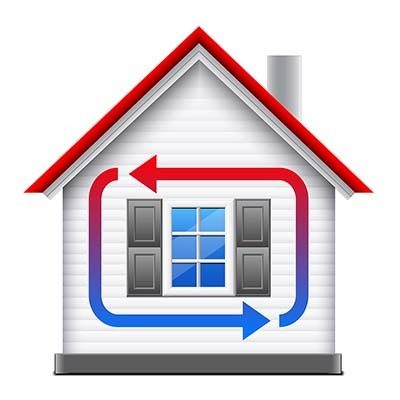The heat exchanger is an essential component of a furnace.
Whether you have a gas or electric furnace, it probably features a heat exchanger. It’s a relatively simple component that’s designed to transfer heat into the ductwork.
For a better understanding of heat exchangers and how they work, keep reading.
The Basics of Heat Exchangers
A heat exchanger is a radiator-like component that’s installed within a furnace.
It’s known as a heat exchanger because it transfers or exchanges heat from the furnace’s combustion chamber or heating element to the ductwork. When the furnace is turned on, it will consume gas or electricity to generate heat.
The heat exchanger will absorb this heat while simultaneously moving it to the ductwork.
How Heat Exchangers Work
Heat exchanges consist of metal tubes that heat up when your furnace is running. Metal, of course, offers a high level of thermal conductivity. Therefore, metal heat exchangers are effective at transferring heat.
You can find the heat exchanger attached directly above your furnace’s combustion chamber or heating element. If you have a gas furnace, it will be connected to the furnace’s burners. The burners will ignite gas to produce heat. The heat exchanger will then absorb this heat.
The top of the heat exchanger is connected to your ductwork. As a result, heat will travel from your furnace’s combustion chamber or heating element to the heat exchanger where it’s able to reach the ductwork.
Signs Your Heat Exchanger Needs Replacing
Like most heating, ventilation and cooling (HVAC) system components, heat exchangers can fail.
One of the most common – as well as dangerous – forms of failure is cracking. The constant heating and cooling of a heat exchanger can cause it to crack. Some of these cracks are large and easy to spot, whereas others are smaller and more discreet.
Regardless, if your heat exchanger is cracked, you should get it replaced.
At best, a cracked heat exchanger will make your furnace less efficient. Your furnace will have to consume more energy to warm your home if it’s cracked. A cracked heat exchanger, however, can cause other, more serious problems, such as combustion gases leaking into your home.
Heat exchangers are designed to be sealed. If there’s a crack in a gas-furnace heat exchanger, combustion gases like carbon monoxide may leak out of it.
Therefore, you should avoid using your furnace if the heat exchanger is cracked or otherwise damaged.
If you are experiencing a problem with your air conditioning or heating call us at 512-336-1431 to schedule an appointment. We’ll be glad to come out and take a look at the issue.
1431-183 A/C & Heating proudly serves Round Rock, Georgetown, Cedar Park, Pflugerville, Leander, Liberty Hill, and North Austin.

